As part of the activities it undertook for its 90th anniversary, Suntory established The Suntory Fund for Bird Conservation, a public trust, in 1990 to augment its bird conservation activities. It provides grants to fund bird conservation activities in Japan and overseas to promote global environmental conservation through bird conservation.
The first grant was made in FY 1990, and as of the 36th grant in FY 2025, a total of 745.60 million yen had been awarded to 534 organizations.
In FY 2006, a new “Regional Bird-watching Activities Grant” category was added to the original “Bird Conservation Groups Activities Grant” category to expand the scope of our bird conservation activities. This category offers grants to school clubs, volunteer groups, and other local groups engaged in local bird conservation and observation activities.
In FY 2011, we awarded an additional grant to a bird conservation group that evaluated the current status of bird nesting areas in the Tohoku region, which was severely damaged by the Great East Japan Earthquake, and worked to preserve valuable records of bird conservation and the changes in the nesting environment.
In FY 2015, to revitalize ecosystems where water, people, and birds coexist in harmony, we established the “Waterfront Large Bird Conservation” category to provide grants that will achieve breakthroughs in ongoing activities. As a symbol of this goal, we award grants to preserve and improve the habitats of large birds such as the stork, crested ibis, and crane, well-known bird species that are rarely seen nowadays.
This category is open to corporations and voluntary organizations engaged in activities related to the protection and breeding of wild flora and fauna in an effort to preserve the natural environment.
This category is open to elementary, junior high, and high school clubs and committees, children’s environment clubs, and community groups including neighborhood associations and volunteer groups that engage in bird conservation and observation activities.
Corporations or voluntary organizations whose main purpose is doing work related to the protection and propagation of wild animals and plants for the conservation of natural environments. The activities of groups funded with these grants are expected to be at a level for which the relevant bird protection division of each prefecture or a Ministry of the Environment regional office will provide the Fund with a letter of recommendation.
In order to widen its scope of support, from fiscal 2022 the Suntory Fund for Bird Conservation (“Fund” below) will accept grant applications from overseas bird conservation groups under the “Global Application Scheme” on the condition that application is made through a proxy conservation group in Japan.
This category refers to organizations that protect storks, crested ibis, cranes, and other birds, as well as maintain the rice paddies, marshlands, and other habitats where they reside. However, organizations that have established or are able to establish a solid base in their area of activity in collaboration with local governments, other bird protection organizations, or other organizations are eligible.
In the past, we held presentation ceremonies in which organizations that received grants gave presentations on their activities in two categories: Bird Conservation Groups Activities Grant Category and Waterfront Large Bird Conservation Category. (Due to venue constraints and other factors, we have limited the number of groups presenting in these two categories.)
For details on past presentation ceremonies, refer to the below links.
FY 2024 (35th) Activity Grant Presentation Ceremony (13 organizations)
FY 2023 (34th) Activity Grant Presentation Ceremony (12 organizations)
FY 2022 (33rd) Activity Grant Presentation Ceremony (15 organizations) [Held online]
FY 2021 (32nd) Activity Grant Presentation Ceremony (15 organizations) [Held online]
FY 2020 (31st) Activity Grant Presentation Ceremony (canceled to avoid COVID-19 risk)
FY 2019 (30th) Activity Grant Presentation Ceremony (17 organizations)
FY 2018 (29th) Activity Grant Presentation Ceremony (13 organizations)
FY 2017 (28th) Activity Grant Presentation Ceremony (15 organizations)
FY 2016 (27th) Activity Grant Presentation Ceremony (14 organizations)
FY 2015 (26th) Activity Grant Presentation Ceremony (12 organizations)
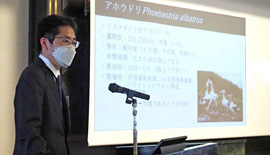 |
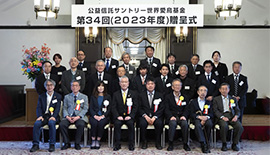 |
Activity Presentation |
Commemorative photo of the presentation ceremony |
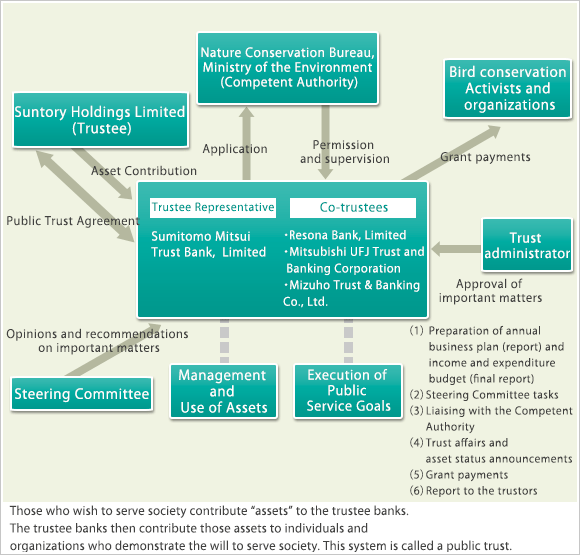
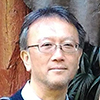
Born in Katsushika, Tokyo in 1955. After completing graduate studies at Shinshu University, he was hired by the Environment Agency. He worked as a national park ranger at Daisen-Oki National Park and Rishiri-Rebun-Sarobetsu National Park. He has worked in the Nature Conservation Bureau of the Environment Agency, the Economic Cooperation Bureau of the Ministry of Foreign Affairs, the Japanese Embassy in Kenya, and the Kagoshima Prefectural Government, where he was in charge of nature conservation, development assistance, and liaising with the United Nations. At the Ministry of the Environment, he handled the global environment, public relations and media, wildlife, evaluating policies, local environments, and natural environments, among other areas. He retired as Director General of the Nature Conservation Bureau in 2015. He has served as the Managing Director of Kyukamura village since 2016. He is the author (co-author) of “Ryokuchi Seitaigaku (The Ecology of Green Spaces)” (Asakura Publishing) and “Tori tono Kyosei o Mezashite (Towards a Harmonious Coexistence with Birds)” (Chuohoki Publishing).
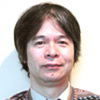
Born in Niigata Prefecture in 1955. Graduated from the Department of Agriculture at Tokyo University of Agriculture and Technology and completed graduate studies at the University of Tsukuba’s Graduate School of Environmental Science. He worked as an assistant professor at Saitama University and is currently a professor emeritus in the Sociology Department at Rikkyo University. Serves as Director of Rikkyo University’s ESD Research Center and President of The Japanese Society for Environmental Education. His publications include “Shizen Hogo Kyoikuron (Theory of Nature Conservation Education)” (Supervisor, Tsukuba Shobo), “Nihongata Kankyo Kyoiku no Chie (The Wisdom of Japanese-style Environmental Education)” (Editor, Shogakukan), “Anata no Kurashi ga Sekai o Kaeru: Jizokukano na Mirai ga Wakaru Ehon (Your Lifestyle Changes the World: A Picture Book for Understanding a Sustainable Future)” (Supervisor, Yama-kei Publishers), and “Shimin no Tame no Kankyokoza (Environmental Lectures for Citizens)” (Editor, Chuohoki Publishing).
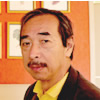
Born in Osaka City in 1944. Graduated from the University of Tokyo with a degree in French literature and completed his graduate studies there. French literature scholar. Author. Professor at Osaka University of Arts. Professor emeritus at Saitama University. Established the non-profit organization Japan’s Henri Fabre Institute . Opened the Fabre Museum in his home, displaying specimens and other materials. He is the author of many books, including “Mushi no Uchushi (Insects in Space)” (Yomiuri Prize for Literature), “Tanoshiki Nettai (The Fun Tropics)” (Suntory Prize for Social Sciences and Humanities), and “Hanmyo no Yado (The Tiger Beetle Inn)” (JTB Travel Literature Grand Prize). He is currently working to translate and publish “Kanyaku Fabre Konchuki (A Complete Translation of Fabre’s Writings on Insects)”.
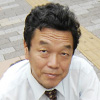
Born in Tokyo in 1947. After graduating from the Department of Agriculture at Meiji University, he became an employee of the Tokyo Metropolitan Government, where his primary responsibility was breeding Japanese animals at Tama Zoological Park and Ueno Zoo. He received the Technical Research Award from the Japanese Association of Zoos and Aquariums for his work in breeding wild geese and raising hares. After serving as Director of the Ueno Zoo and Managing Director of the Tokyo Zoological Park Society , he is currently a trustee of the Japanese Society for the Preservation of Birds, the Yamashina Institute for Ornithology, and the National Museum of Nature and Science. His publications include “Dobutsuen de Mainichi Hataraku (Working Every Day at the Zoo)”, “Kame no Kaikata Sodatekata (How to Care for and Raise Turtles),” and “Boku no Watashi no Suizokukan (“My Own Aquarium)”.
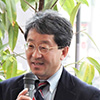
Born in Nagano Prefecture in 1964. After graduating from university, he became a member of the Japan Bird Conservation Federation and was dispatched to the King Mahendra Nature Conservation Foundation (Nepal) and the Saudi Wildlife Rescue Center. After that, he served as the secretary general of the Japan Ecosystem Association, and also served as executive director and secretary general of the Japan National Trust Association. While involved in environmental conservation in general, he is also a part-time lecturer at Kagoshima University, Niigata University, Land, Infrastructure, Transport and Tourism University, and gives lectures at companies. His publications include "Biotope Network Ⅰ・Ⅱ" and "School Biotope - An Introduction to Environmental Education to Foster the Power to Live."
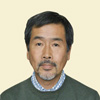
Born in Okazaki City in 1951. Graduated from the Department of Bioresource Sciences at Nihon University and completed his graduate studies there. Doctor of Agriculture. Retired as an associate professor after teaching at the university. Specializes in landscape architecture and green spaces, and researches the relationship between green environments and birds and other animals. He has been involved in committees related to the conservation of bird diversity in parks and green spaces, committees related to the conservation of birds of prey, committees related to the conservation of storks and herons, and a survey of the Okinawa rail population. He has been bird-watching for 60 years, beginning in kindergarten. He is the author of “Ryokuchi Seitaigaku (The Ecology of Green Spaces)” (Co-author, Asakura Publishing) and “Zokibayashi no Shokusei Kanri (Thicket Vegetation Management)” (Co-author, SoftScience), among other works.

She has long been engaged in the management of international conferences on environment and development, the promotion of the United Nations Education for Sustainable Development (ESD), and the support of citizen activities at biodiversity, G7 summits, and environment ministers' meetings. It participates in the operation of the Environmental Partnership Plaza (GEOC). Currently, She is a member of the SDGs Civil Society Network, the Overseas Environmental Cooperation Center, a director of the NPO National Organic Agriculture Promotion Council, and a councilor of the Nature Conservation Society of Japan. In Sammu City, Chiba Prefecture, She presides over an agricultural experience project and conveys the importance of preserving the natural environment.
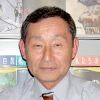
Born in Tokyo in 1941. After graduating from Tokyo University of Agriculture, he became an employee of the Japanese Society for the Preservation of Birds and served as a director. He has been consistently involved in the conservation of wild birds and the natural environment through activities such as opposition to the reclamation of tidelands in Tokyo Bay, opposition to the capture of small birds by mist nets, and research and conservation of rare birds such as the crested ibis of Sado Island, the cranes of Kagoshima, and the swans of Lake Hyoko in Niigata Prefecture. Recently, he has been involved in the conservation of birds of prey. In 1973, Suntory Ltd. (at the time) launched a bird-watching campaign (primarily through newspaper advertisements), and he has been involved in it since the beginning. He started bird watching when he was a junior high school student and continues to do so constantly.